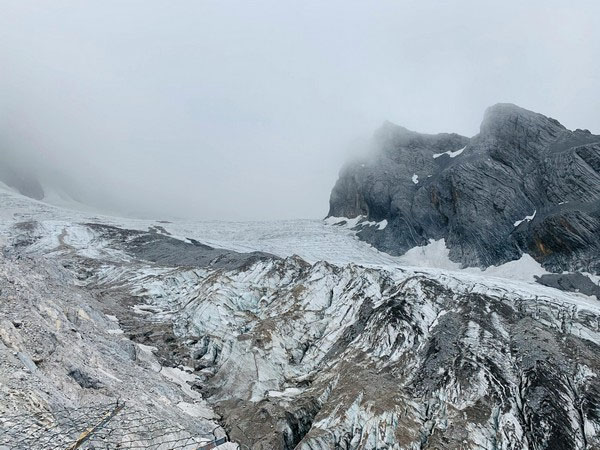Experts express concern over the ISRO analysis findings, indicating that the expansion of glacial lakes due to warming could result in cascading impacts in lower regions. According to ISRO, satellite data archives covering the past three to four decades offer valuable insights into the transformations happening in glaciated environmemts, ISRO said.
ISRO’s report highlights substantial alterations in glacial lakes within the catchments of Indian Himalayan river basins from 1984 to 2023, as revealed by long-term satellite imagery.
According to a report from the Indian Space Research Organisation (ISRO), at least 89 percent of the 2,431 glacial lakes identified in the Himalayas during 2016-17 have experienced significant expansion since 1984.
The long-term changes in the Ghepang Ghat glacial lake (Indus river basin) at an elevation of 4,068 metres in Himachal Pradesh show a 178 per cent increase in size from 36.49 to 101.30 hectares between 1989 and 2022, the ISRO said. The rate of increase is about 1.96 hectares per year.
The satellite-derived long-term change analyses also provide valuable insights for understanding glacial lake dynamics, which are essential for assessing environmental impacts and developing strategies for glacial lake outburst flood (GLOF) risk management and climate change adaptation in glacial environments, ISRO said. The study faced challenges due to the inaccessible and rugged terrain, the ISRO said. Satellite remote sensing technology, however, helped as an excellent tool for inventory and monitoring due to its wide coverage and revisit capability, the New Delhi space agency said.
The Himalayan mountains are often referred to as the “Third Pole” because of their extensive glaciers and snow cover, and are highly sensitive to changes in the global climate, both in terms of their physical characteristics and their societal impacts.
Research conducted worldwide has consistently shown that glaciers across the globe have been experiencing unprecedented rates of retreat and thinning since the onset of the Industrial Revolution in the 18th century, ISRO said in the report.
This retreat leads to the formation of new lakes and the enlargement of existing ones in the Himalayan region. These bodies of water, created by the melting of glaciers, are known as glacial lakes and play a crucial role as freshwater sources for rivers in the Himalayan region However, they also pose significant risks, such as GLOFS which can have devastating consequences for communities down- stream. GLOFs occur when glacial lakes release large volumes of melt- water due to the failure of natural dams, such as those made of moraine or ice, resulting in sudden and severe flooding downstream. These dam failures can be triggered by various factors, including avalanches of ice or rock, extreme weather events, and other environmental factors.
■The ISRO report said 601 glacial lakes, or 89 per cent, have expanded more than twice, and 10 lakes have grown between 15 times and double their size. Sixty-five lakes have expanded 1.5 times.
■Of the 2,431 glacial lakes larger than 10 hectares, 676 have significantly expanded, and at least 130 of these lakes are in India 65 (Indus river basin), 7 (Ganga river basin), and 58 (Brahmaputra river basin).
■ Elevation-based analysis shows 314 lakes are locat- ed in the 4,000 to 5,000 metres range, and 296 lakes are above 5,000 metres elevation, ISRO said in the report ‘Satellite Insights: Expanding Glacial Lakes in the Indian Himalayas’ released.
👉 Click here to read the latest Gujarat news on TheLiveAhmedabad.com




